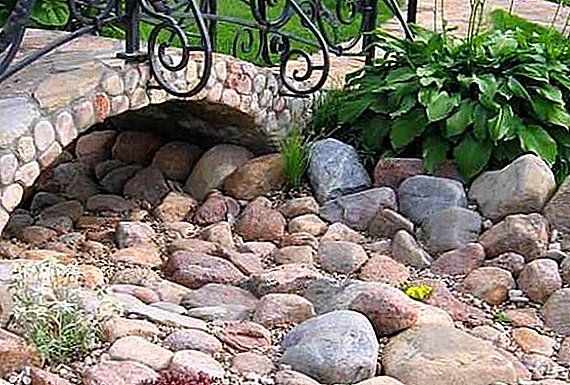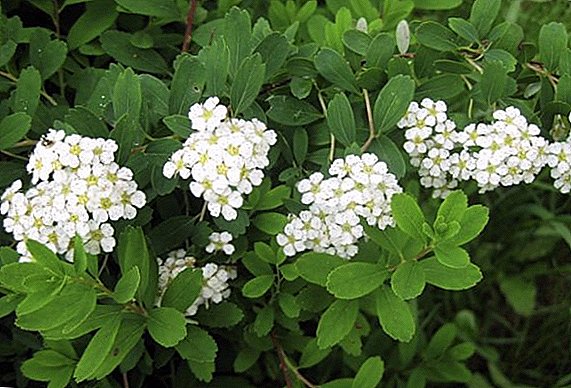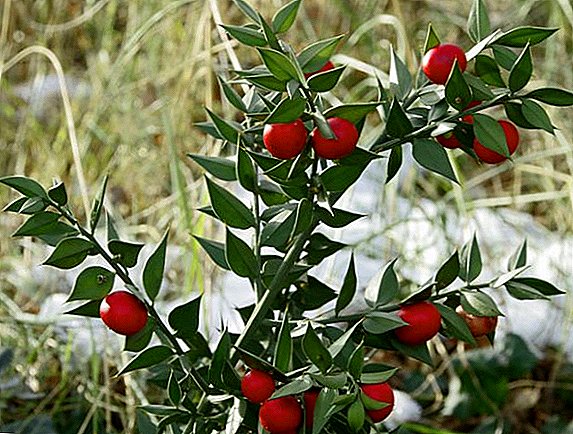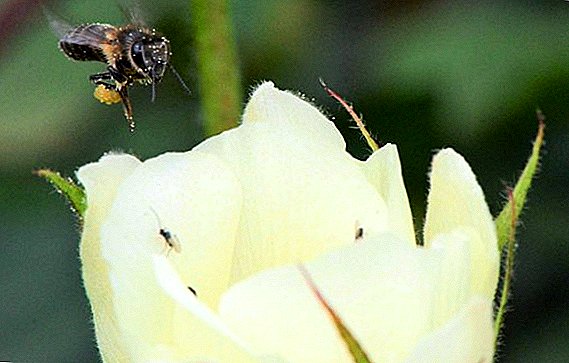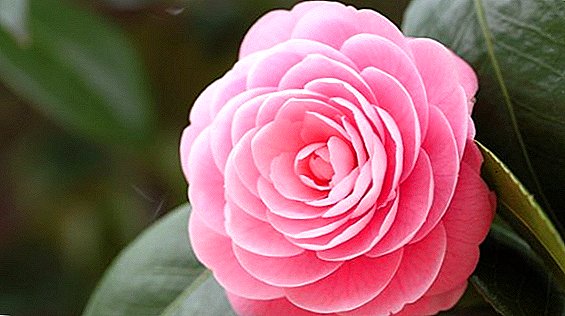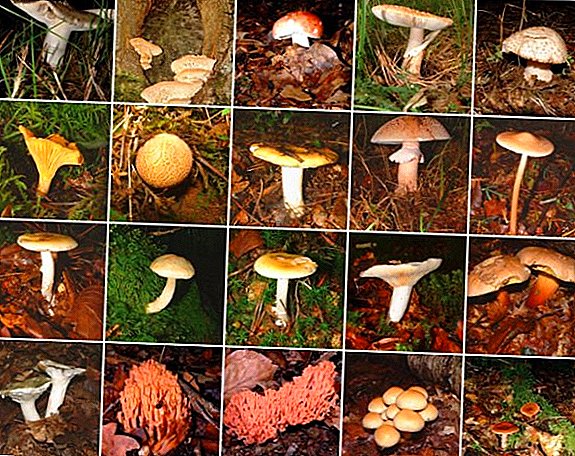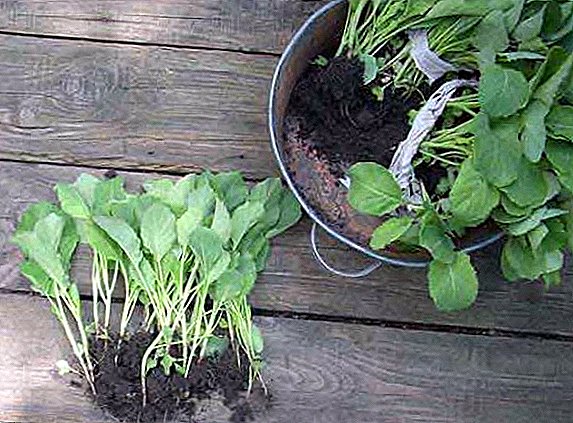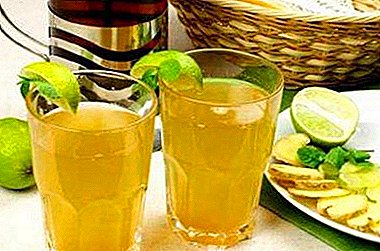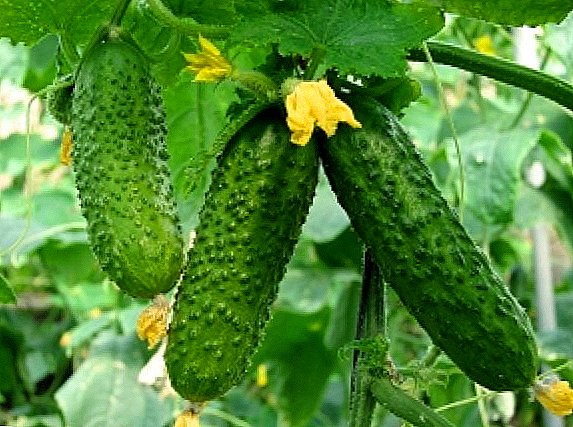
At the moment, a large number of different varieties of cucumber, a representative of the pumpkin family, have been bred from various countries.
Even a gardener with many years of experience in growing this crop can become entangled in this abundance of seeds. What can we say about amateurs or those who have just started breeding this vegetable.
And if a novice gardener lives in such an extremely unstable region as the Urals, due to weather conditions, then a person will certainly resort to help.
To gain confidence that his work will not go down the drain, the gardener will begin to study in detail information about how to plant cucumber in the Urals and which varieties to choose.
Speech in this material will go about the varieties of this crop.
Sort "Cupid"

Partenocarpic hybrid. Ripens quickly (42 - 45 days). The plants are very strong, powerful, with a very developed root system.
In one node of such a bush 6 - 8 cucumbers can be formed. The fruits are cylindrical in shape, dark green, with a large number of small tubercles, at the end of which there are white spikes of small size.
Peel cucumber varieties "Cupid" is very thin, with the consumption of almost not felt. The flesh together with the peel does not give absolutely no bitterness in the taste. The fruits do not lose their attractive appearance, if they lie for a very long time in the sun, that is, they do not turn yellow.
Also these cucumbers can be transported, while they do not wither and do not deteriorate.
Yields are very high - 25 - 28 kg per 1 sq. M. But there is a right to take care of the bushes, to water and feed in time, the yield can grow up to 45 - 50 kg per unit area! The variety is not affected by the present and downy mildew.
In the climatic zone of the Urals, it is desirable to grow seedlings for planting bushes of this variety. After 35 - 40 days, the seedlings can be instilled.
Planting scheme: 3 seedlings per 1 square. m. of land. Caring for seedlings normal: watering, dressing, picking after the appearance of the first or second leaf. Sowing seeds at the end of March. The time for planting seedlings in the ground - the end of May.
This variety is resistant to bad weather conditions.
It is advisable to carry out regular watering, make fertilizer complexes in the soil, remove weeds, and also loosen the soil after watering.
Sort "Arina"

Partenocarpic hybrid. Mid-season (43 - 46 days). Type of flowering female. Bushes powerful, sprawling, form a large number of stepsons.
The number of leaves on the shoots is average, the leaves themselves are rather large. In one node formed 1 - 2 ovary. Fruits are bright green, 15 - 17 cm long, very juicy, of excellent taste, crispy.
The peel is covered with large tubercles in the middle, spines are white. Can be used fresh or sent for recycling.
Powdery mildew, olive blotch, cucumber mosaic virus do not affect the bushes of this variety. But powdery mildew can slightly spoil the crop, if you do not take therapeutic measures.
Bushes withstand severe temperature fluctuations and lack of sunlight, which makes this variety an indispensable "inhabitant" of the Ural gardens. The average yield, 5 - 6 kg per square meter. meter
It can grow in greenhouses and in unprotected land. Need to start with seedlings. Although, if the greenhouse is heated, the seeds can be placed immediately in the ground.
Care seedlings ordinary. It is advisable to temper the seedlings. When planting young bushes in the greenhouse on 1 square. m. you can prikopat no more than 3 seedlings. If you grow these cucumbers in unprotected soil, then 3 - 4 bushes can be planted per unit area.
Is important regular watering with warm water, and after - loosening the soil. To prevent the bushes from growing the vegetative mass to the detriment of the crop, it will be necessary to pinch the stepchildren before the fruiting period begins. Also during this period, it is imperative to reduce the amount of nitrogen applied by 15%, and after you have started harvesting, the proportions of fertilizing must be restored.
Variety "Moscow Nights"

Early parthenocarpic hybrid.
Fruits can be used in 42-45 days after the seedlings have risen.
Indeterminate shrubs, branching in the middle degree. In the nodes formed by 1 - 2 ovary.
Fruits are saturated green, cylindrical in shape, the average length is 12–14 cm, the weight is 80–110 g. The surface is tuberculate, the thorns are white, the number of irregularities is below average.
The taste of both fresh and pickled canned cucumbers is excellent.
This hybrid is characterized simultaneous ripening, as well as stress resistance to changes in weather conditions. Able to actively bear fruit in conditions of lack of sunlight. Hybrid is not affected by most diseases, but downy mildew can slightly damage the plants and the crop.
It is necessary to begin cultivation of this hybrid with cultivation of seedling. Bookmark seeds can be done in mid-April. Seedlings need to be watered, fertilized and hardened.
Picks according to plan, that is, in phase 1 - 2 of these sheets. Transplanting into the ground is allowed 35 - 40 days old seedlings. planting density is 2 - 3 seedlings in the greenhouse or 3-4 - in the open ground.
The care is ordinary, as the plants are pretty unpretentious. It is advisable not to change the mode of irrigation, especially if the temperature outside is high enough. Regular feeding is necessary for the whole range of fertilizers. Since the bushes are indeterminate, it is possible to install trellis and shoot shoots on supports.
Soil mulching does not hurt the bushes, but will be beneficial. Preventive and therapeutic treatments with plant fungicides are mandatory.
Sort "Voyage"

Hybrid, parthenkarpik. Early ripe - fruits can be consumed 40 - 45 days after germination.
Bushes are quite vigorous, but there are not very many lateral shoots. Fruits of medium size (10–12 cm long), in weight gain 100–110 g, of cylindrical shape. The peel is covered with small tubercles, spikes on which are white.
The flesh and the skin itself are green, but there are still light yellow stripes on the surface. Bitterness is neither in taste of pulp, nor in taste of a peel.
Bushes of this variety are calm tolerate any changes in weather conditions, namely, temperature extremes and excessive air humidity.
Kladosporiosis, powdery mildew and cucumber mosaic virus do not affect this variety. The yield is slightly above average, namely 3.5 - 3.7 kg per 1 plant. Suitable for food in its original form, and canned or pickled.
It is advisable to grow bushes of this variety in greenhouses. It is necessary to sow seeds for seedlings in April, and transplant seedlings in May, when more or less good weather has been established.
It is important to maintain the correct temperature at which the seeds germinate, otherwise the process of germination may be delayed. It will optimally maintain 25 - 30 ° C in the soil.
After 30 - 35 days, seedlings can be dripped according to the 50 x 55 cm scheme.
Bushes are unpretentious in the care. The main aspects are irrigation, mulching and loosening the soil, as well as fertilization. Water the bushes need warm water every 3 to 4 days. Feed every 10 days.
Sort "Altai"

Very famous in the circles of gardeners and gardeners. The early bee-pollinating variety, the technical maturity of the fruits occurs in 35 - 38 days after the first shoots of the seedlings.
The plant of the folding type, the number of lateral shoots formed is average, the length of the shoots reaches 1 - 1.3 m. Zelentsy is of regular cylindrical shape, 9 - 10 cm long, and weighing 85 - 90 g.
The color of the flesh and peel is rich green, the flesh itself, along with the peel, does not taste bitter. The surface of the fruit is served by a large number of tubercles, the pubescence on them is white. These greenhouses can be rolled up in banks and pickled in barrels. Fresh are also good.
High yield - 5.5-6 kg per 1 sq.m. Most cucumber diseases do not affect this variety.
Suitable for both open and closed ground. Start growing need rassadnym metol. Conditions for future seedlings are normal. Sowing can be done in early April. The depth of the seeds should be 1.5 - 2 cm. The density of planting can not exceed 3 seedlings per 1 sq. M.
Dripping bushes can be in the beginning - the middle of May. If the landing will be made in the ground, and the weather may get worse, then young bushes are better to cover for a while.
In the care of unpretentious. It will be enough to regularly water the bushes with water at room temperature, loosen the soil and conduct additional feeding. You need to make all the necessary chemical elements, as well as organic. It is important to take action against fungal and viral diseases in time, even as prevention.
Grade "Far East 27"

Mid-season bee-pollinating variety. Fruits can be used after 40 - 55 days after the first shoots.
Bushes are spreading, and the length of the shoots is quite large. It can be said that this variety is indeterminant. There are few leaves on the plant, so the fruits get enough sunlight.
The cucumbers themselves are rather long (up to 15 cm), weighing 100–200 g, resemble an elongated ellipse in shape, and are large in size. The peel is green with yellow stripes, there is a slight wax coating on the fruit.
The taste of fresh or processed cucumber is excellent. This variety is different a high degree of resistance to downy mildew. Also, the bushes of these cucumbers perfectly tolerate the lack of moisture, which makes it possible to plant these plants on elevated ground.
The leaves on the bushes are few, so the harvest process is facilitated. Productivity - 1 - 3 kg per unit area of the bed.
Bookmark seeds for seedlings can be done from mid-April. Depth of laying seeds - 2-3 cm. Saplings must be often watered and fed so that they are strong enough before planting in the Ural soil. It is also desirable to temper the seedlings. A pick is needed.
Transplantation into the ground should take place when there is no frost at night. Planting density should be 2 - 3 seedlings per square. meter. You can grow both in the greenhouse and in the open field.
The variety itself is unpretentious. Therefore, it will be able to withstand night temperature changes, as well as failures in the irrigation mode.
The number of weekly irrigations should reach 3 - 4, especially in high temperature conditions. Feeding required. You can also use the trellis method to grow these shrubs, as the plants are indeterminate.
It is also interesting to read about parthenocarpic cucumber varieties.
Variety "Miranda"

Hybrid - parthenkarpik early ripening (40 - 45 days). The purpose of this variety is universal. You can land in any soil.
The plants are vigorous, the number of leaves on the shoots is large, the leaves themselves are quite large. One node consists of 1 - 2 ovaries. Zelentsy are average, 11–12 cm long, in weight reach 110–120 g, cylindrical in shape, with a large number of tubercles, white pubescence.
The peel is bright green, there are many white specks, there are also light yellow stripes that go to the middle of the fruit. The pulp of a cucumber of usual color, juicy, crackling, very sweet, possesses a pleasant smell.
The fruits of the variety "Miranda" are used for the manufacture of salads, to which these cucumbers add taste and a pleasant smell. Also, these greenhouses are suitable for preservation and pickling.
Neither strong fluctuations in temperature, or powdery mildew together with other diseases can cause serious harm to the bushes and fruits of this variety.
Mid-April will be the best time for sowing seedlings. Transplantation into the ground can be done from the end of May, but seedlings can be planted in a heated greenhouse even earlier. You can only dropping those seedlings that have reached the age of 30 days.
The soil for the seeds must be well heated, otherwise they will not germinate. With the trellis method of growing bushes per 1 square. m. you can prikopat 2 - 3 bush, and if there is no support, then 3 - 4 bush. You need to take care of soil fertility in advance, therefore to fertilize better in autumnUral cucumber.
Watering the bushes should be at least every 2 - 3 days, and with water at room temperature. The amount of watering and water depends on the frequency of natural precipitation. It is important to regularly fertilize the soil, and also to loosen it mulch. If the plants do not bear fruit for a long time, then you need to pinch the shoots.
Thus, the cultivation of cucumbers in the Urals is no longer an overly heavy task, because, as you can see, there are many varieties of this crop that are not afraid of the natural conditions of this region.


